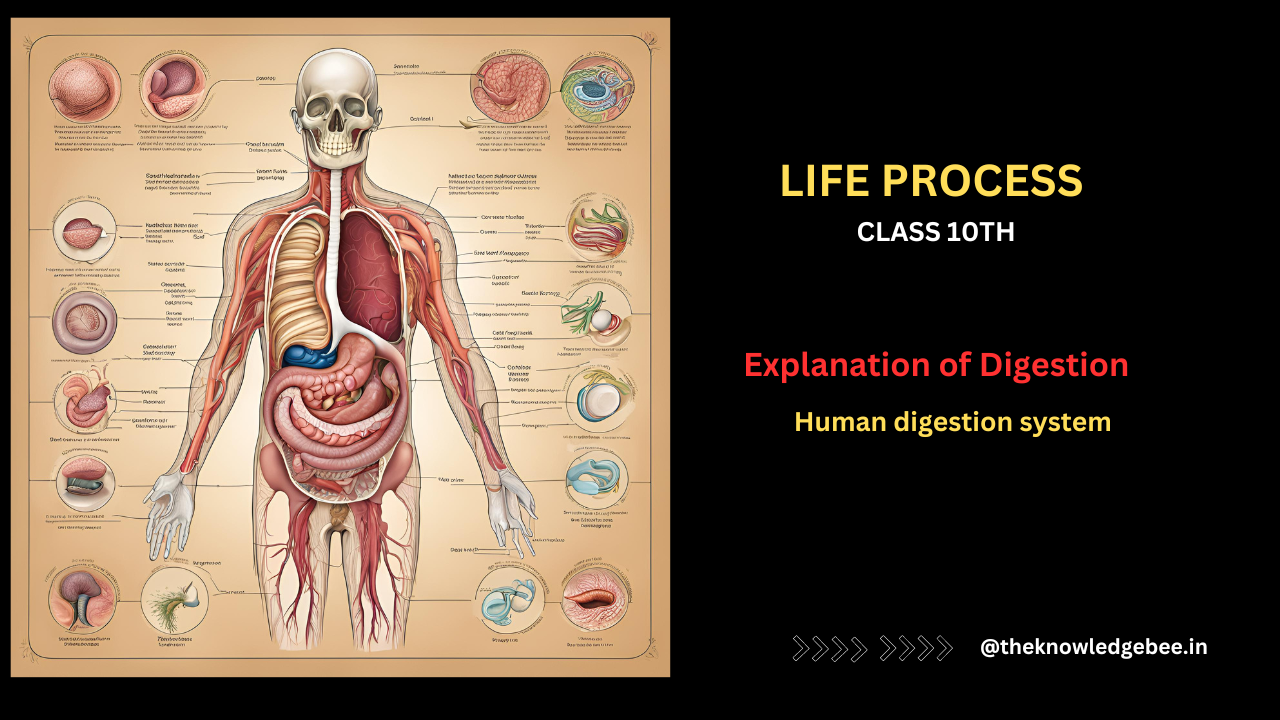Digestion : Digestion is a series of enzymatic process that occurs in the gastro intestinal tract and converts large complex and insoluble, food molecules into smaller simple and soluble molecules.
The digestion of food starts in the mouth in the floor of buccal Cavity. The floor of buccal cavity is formed by a muscular tongue which helps in ingestion and swallowing food . It also bears taste buds which perceive the taste of food .
Both upper and lower jaws are provided with different kinds of teeth I e incisors , canines , molars and premolar. The buccan cavity receives the secretion of three pairs of salivary through their ducts . With the help of teeth , tongue , and the movement of jaws , food is mixed with saliva. Saliva is a watery secretion, containing the enzymes ptyalin, lysozyme, mucous etc. Mucous moistens and lubricates the food and makes it easier to swallow. Ptyalin begins the digestion of starch and converts it into maltose . Lysozyme helps in keeping the buccal cavity clear of pathogenic micro organisms by breaking down their cell wall. Ultimately the semi solid , partially digested food particles are pushed down toward pharynx from where the food is swallowed into the stomach through the Oesophagus.
Oesophagus is a narrow muscular tube of about 25cm which leads to the stomach. The stomach is a muscular bag which has many glands on its walls . The cells of these glands secrete hydrochloric acid protein digesting enzymes, pepsinogen and porenin and mucin . The mixture of this secretion is called gastric juice .
Hydrochloric acid kills bacteria, loosens fibrous and cellular components of tissues and promotes the conversation of pepsinogen to its active form pepsin. Pepsin hydrolyses proteins into smaller polypeptides and converts more molecules of pepsinogen into pepsin , a process autocatalysis. Hydrochloric acid also converts prorenin into rennin which in turn coagulates caseinogen , the soluble protein of milk into insoluble calcium salt of casein, which is then digested by pepsin . Mucin coats the stomach preventing it from the effects of Hydrochloric acid and pepsin.
The muscles of the stomach wall thoroughly mixup the food and with gastric juice and eventually convert it into a semi liquid mass called chyme . Gradually the stomach empties the chyme into the duodenum via the relaxed pyloric sphincter .
Duodenum is the first part of small intestine. The small intestine in man is king , highly coiled , narrow tube , it is distinguished as duodenum , jejunum and peum . In the duodenum food is acted upon by the pancreatic juice and bile from pancreas and liver respectively which are poured into it via the common bile duct .
The enzymes of a pancreatic which include lipase, trypsin, etc. further , digest the protein into amino acids and smaller polypeptides, into glucose, fructose and fats into smaller fatty acids and glycerol. The bile help in making food alkaline and reduce the surface tension of fats which is needed for proper enzyme action. Digestion on of food is thus completed in the small intestine by the secretion of intestinal juice .
Absorption : The mixing of digested food in the body is called absorption. All the digested food is absorbed in the last part of small intestine i.e ileum. The ileum processes many fingers like projections known as villi be whose walls are richly supplied with blood capillaries and lymph vessels. From the villi blood capillaries converge to from hepatic portal vein which delivers the absorbed food to the liver and rest of the body . The food is absorbed by the process known as active transport.
Assimilation : The conversion of absorbed food into living protoplasm is called Assimilation. Glucose is used to release energy in the process of respiration. Excess amount of glucose is converted into glycogen and is stored in the liver . The amino acids are used for building protoplasm. The fats are used to provide energy and in the formation of membranes.
Egestion : The undigested food enters the large intestine. Large intestine is much shorter and wider than the smaller intestine. It shows no villi the large intestines serve to store the unabsorbed food temporarily. It also concentrates the contents by absorbing water to form stool or faeces which is then thrown out of the body from the anus . This is known as egestion.
Metabolism : metabolism is the sum, total of chemical reactions that take place in living organisms. It is the process of taking complex food and its conversion into chemical substances to release energy and help in growth of the body. The metabolic reactions are grouped as:
a) Anabolism: Anabolism is a constructive process in which complex substances are formed from simple substances and requires energy. For example photosynthesis is an anabolic activity, in which food is prepared from simple inorganic substances using sunlight as energy. Similarly Assimilation is an anabolic activity.
b) Catabolism: Catabolism is a destructive process in which the food i .e complex molecules are broken down to release energy. For example respiration is catabolic activity during with foods broken down to release energy.
Loving organism show growth if anabolic rate is higher than the catabolic rate .During ageing the catabolic rate comparatively increases.
read also Life Processes (Class 10th science)
